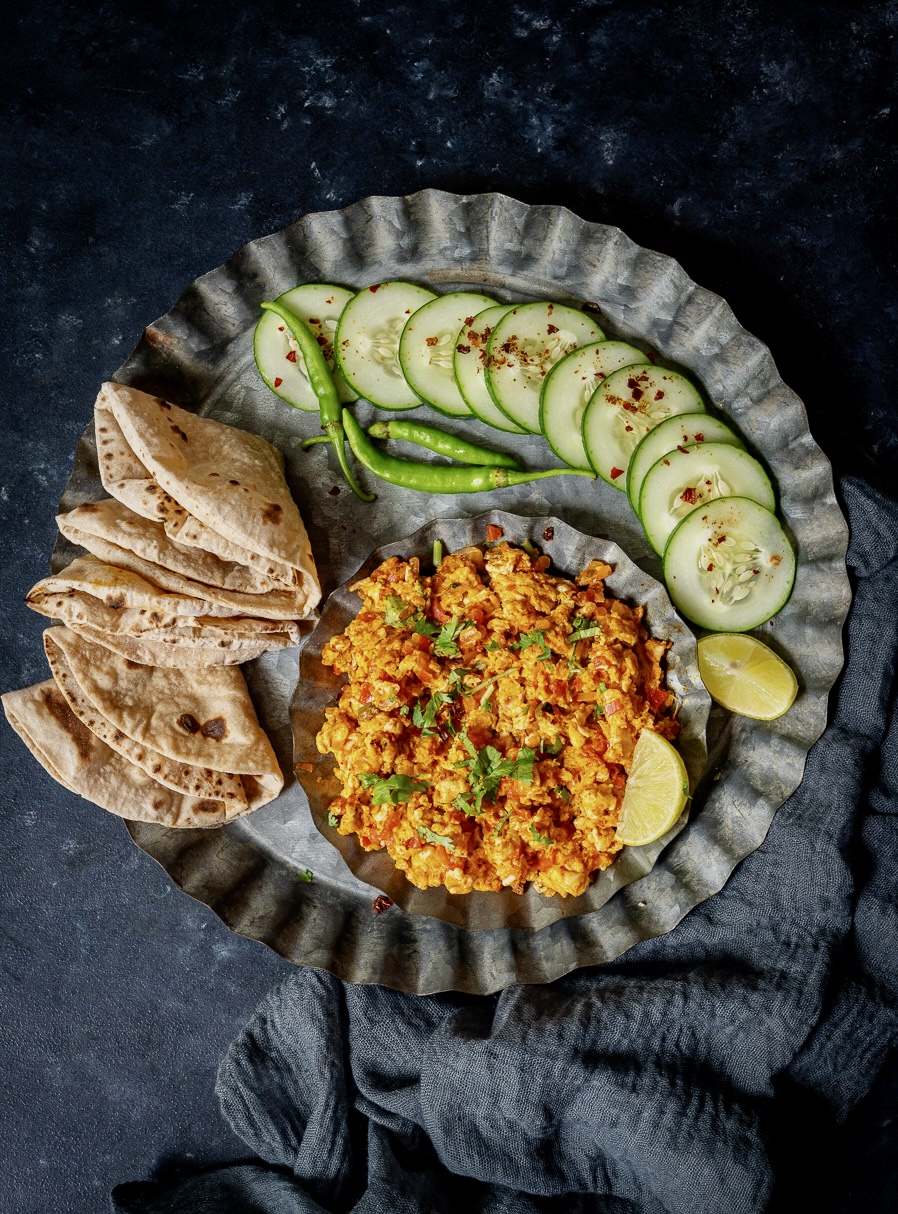A bhurji is basically a scramble, so egg bhurji is Indian-style scrambled eggs, made super delicious with the use of local spices. I first ate them on a recent holiday in the hills of North-East India, where I took one bite and thought, “Oh, this is such a simple recipe – why didn’t I think of it earlier?” I already knew how to make bhurji, having done so with paneer plenty of times and with tofu more and more often, but I just hadn’t considered making eggs in this method. Egg bhurji is now frequently enjoyed in my home, and I thought you may want to make some as well.
The reason why egg bhurji has become a staple at my dining table is because of the protein boost that is provided. I have been rather good at sticking to my workout routine lately, and it’s important that I consume more protein to support it. Eggs are a fantastic, and very easy, way to do this. I have been looking at more exciting ways to consume them rather than just having a plain omelette or a sunny side up, which can get boring on a daily basis. You may remember the moringa omelette recipe that I shared once, in which two nutrient superfoods came together. You may also remember the recipe for shakshouka, which is more ornate and a lot of fun over Sunday brunch.
This bhurji is not at all elaborate, but is interesting because it is so flavourful. It has all the same spices as a standard subzi (Indian-style vegetable accompaniment). If you’re vegetarian, you don’t need to be left out. Just substitute the eggs in the method below for paneer or tofu, and your bhurji will still turn out delicious!
This new routine of eating eggs daily reminds me fondly of my late brother, who used to bolt six of them at a time when he was a rower. I’ve written about his large breakfasts before. Even though I am not an athlete like he was, now that I’ve gotten disciplined with exercising and am consciously eating eggs for this reason in particular, I can’t help but smile thinking of how I have once again followed in his footsteps.
I prefer my egg bhurji freshly made – warm and straight from pan to plate. But I know that it works well in a tiffin carrier too, so you can make it in the morning and have it for lunch. It’s also simple to prepare, which will mean that your cooking will be quick even when you’re getting ready to head out to work.

Egg Bhurji
(Serves 1)
1 tablespoon milk
2 eggs
1 teaspoon oil
1 teaspoon ginger (grated)
1 tablespoon tomato (finely chopped)
1 onion (finely chopped)
2 green chillies
Salt to taste
½ teaspoon coriander powder
¼ teaspoon garam masala powder
½ teaspoon chilli powder
A handful of coriander leaves
Break the eggs into a cup and add milk. Stir well. Set aside. Heat a pan and add the oil. Add the onions and ginger. Sauté for a minute or until tender.
Next, add the tomatoes and green chilli. Sauté well until soft and then add salt, turmeric, coriander powder, garam masala and chili powder. Mix well. Add the eggs and milk mixture. Continue stirring for less than a minute. Serve hot, garnished with coriander leaves (or put it into your lunchbox). Egg bhurji goes really well with rotis.
Eggs don’t make that many appearances on this blog, but here are a few more recipes that feature this protein-rich powerhouse to the fullest!

